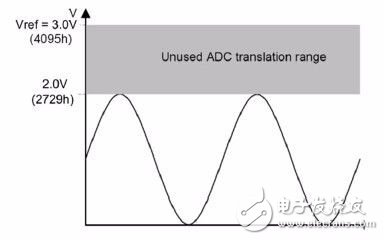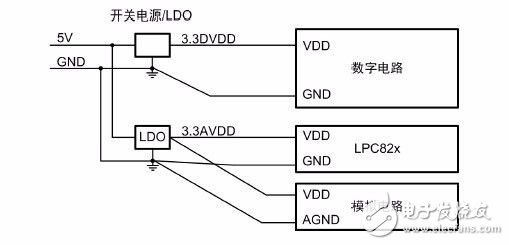Professor Zhou Ligong’s new book, "Programming for AMetal Frameworks and Interfaces (Part 1)", provides an in-depth introduction to the AMetal framework. By studying this book, readers can gain a deep understanding of highly multiplexed software design principles and interface programming methodologies. It encourages focusing on your core domain, evolving your programming mindset, and achieving mutual growth between the company and the individual. With authorization from Professor Zhou Ligong, Zhiyuan Electronic Public Number will serialize the content of the book, offering it as a valuable resource for all.
The second chapter is titled "ADC Signal Conditioning Circuit Design." This section covers sections 2.3, 2.4, and 2.5, which include necessary measures, actual test verification, and application descriptions.
2.3 Necessary Measures
A complete acquisition circuit block diagram is shown in Figure 2.19. From the sensor or signal source to the final ADC output, signal conditioning such as input range adjustment and multi-channel multiplexing is essential. In addition to the ADC itself, the entire acquisition channel must be carefully designed to ensure accurate data acquisition.

Figure 2.19: Typical Acquisition Circuit Block Diagram
When designing the acquisition channel, several factors need to be considered:
- The size of the signal and the full-scale input range of the ADC.
- The polarity of the signal and the ADC input.
- The number of channels and whether simultaneous sampling or multiplexed input is needed.
- Whether the signal is single-ended or differential.
2.3.1 Input Range Matching
Sensor signals are often very weak, with amplitudes that may only cover a small portion of the ADC's range. Matching the maximum input signal amplitude to the ADC's full-scale range is crucial for achieving high conversion accuracy. For example, if the signal ranges from 0V to 2V and the reference voltage is 3V, the ADC will only use 2729 out of 4096 possible values, resulting in a loss of precision.

Figure 2.20: Input Signal Amplitude and ADC Measurement Range
To improve accuracy, external preamplifiers can be used to match the input signal range to the ADC. For instance, a 10x non-inverting amplifier using LMV358A can convert a 0–300mV input to 0–3V. Alternatively, external amplifiers can be used to handle bipolar inputs or build instrumentation amplifiers for differential signals.
2.3.2 Multi-Channel Sampling Setup
In cost-sensitive designs, one ADC is often shared among multiple channels. The LPC82x has 12 analog input pins, but its internal structure allows for time-division multiplexing, as shown in Figure 2.21.

Figure 2.21: Multiplexed Equivalent Circuit of LPC82x Analog Input Channel
However, this setup can lead to accuracy issues due to high source impedance or fast switching causing crosstalk. To mitigate this, op amps can be used selectively for high-accuracy channels while direct input is used for less demanding ones. A hybrid configuration ensures optimal performance without excessive cost.
2.3.3 Power Distribution Strategy
Power supply noise is a major source of interference. To reduce this, it's recommended to power the analog and digital sections separately using a voltage regulator, as shown in Figure 2.25.

Figure 2.25: Independent Powering of Analog and Digital Sections
2.3.4 PCB Layout Processing
Digital switching noise can interfere with analog circuits. To minimize this, place analog and digital components in separate sub-regions, split the ground plane, and avoid parallel traces. Ground traces can be added between analog and digital traces when necessary.

Figure 2.27: Split Ground Plane with Single Point Connection
2.4 Measured Verification
An actual circuit board was built to verify the effectiveness of the improvements. Key parameters like noise-free resolution, INL, offset error, and gain error were tested and compared with the original development board.
2.4.1 Noise-Free Resolution
Noise-free resolution refers to the number of stable bits in ADC output when measuring a DC signal. On the original board, the resolution was limited to 9 bits, while the improved board achieved 10-bit accuracy.
2.4.2 Integral Nonlinearity (INL)
INL measures the deviation of ADC output from an ideal linear response. After the improvements, INL was reduced from 5.3 LSB to 3.6 LSB, significantly improving accuracy.
2.4.3 Offset and Gain Error
Offset error is the deviation at the first transition point, while gain error measures the deviation at the last transition. Both were improved after implementing the suggested design changes.
2.5 Application Notes
The improved board demonstrated better ADC performance, suitable for applications requiring 0.5% accuracy. Users can adjust parameters like filter bandwidth or input range by modifying specific channels or settings, as detailed in Table 2.9.

Table 2.9: User Parameter Selection
4.2Mm Ribbon Connector,Strip Connectors,Strip Terminal,Strip Connector
YUEQING WEIMAI ELECTRONICS CO.,LTD , https://www.wmconnector.com